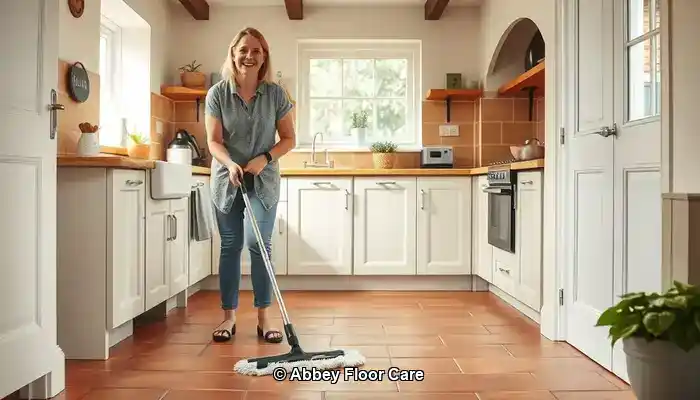Last Updated on September 29, 2025, by David
Essential Insights for Maintaining Your Terracotta Floors
-
- Terracotta's Porous Nature makes it susceptible to quick dirt absorption, particularly in humid regions such as Surrey.
- Effective sealing is crucial to prevent moisture and grime from penetrating the tile surface.
- Regular maintenance is vital—daily sweeping and weekly mopping with pH-neutral cleaners are keys to maintaining the tile’s aesthetic.
- Avoid Harsh Chemicals and steam mops, as they may damage the sealant and etch the tile surface.
- <a href=”https://www.abbeyfloorcare.co.uk/home-garden/can-you-recommend-the-safest-products-for-cleaning-sandstone/”>Eco-friendly Cleaning Products</a> are advisable, particularly in homes with pets or children.
- <b>Professional Restoration Services</b> provide deep cleaning and resealing, offering long-term protection for your tiles.
- Utilise Rugs and Mats strategically in high-traffic areas to minimise dirt transfer.
- Moisture Management is essential—adequate ventilation and prompt spill cleanups help prevent stains and mould.
Why Does Terracotta Become Dirty So Quickly?
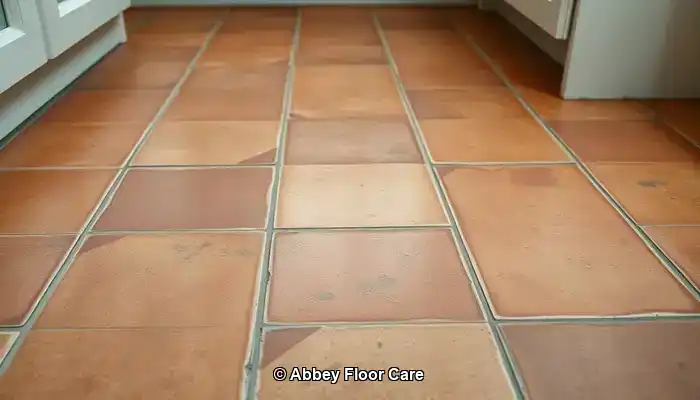
Keeping Dirty Terracotta Clean: Terracotta tiles are a stunning choice for flooring, particularly in traditional or rustic-style homes throughout Surrey. Their inviting warm hues and natural textures impart character to any interior space. However, despite its aesthetic appeal, terracotta is well known for its tendency to become dirty quickly. By comprehending the reasons behind this, homeowners can take proactive steps to maintain cleanliness and beauty.
Expert Advice: Recommended Products for Daily Terracotta Maintenance
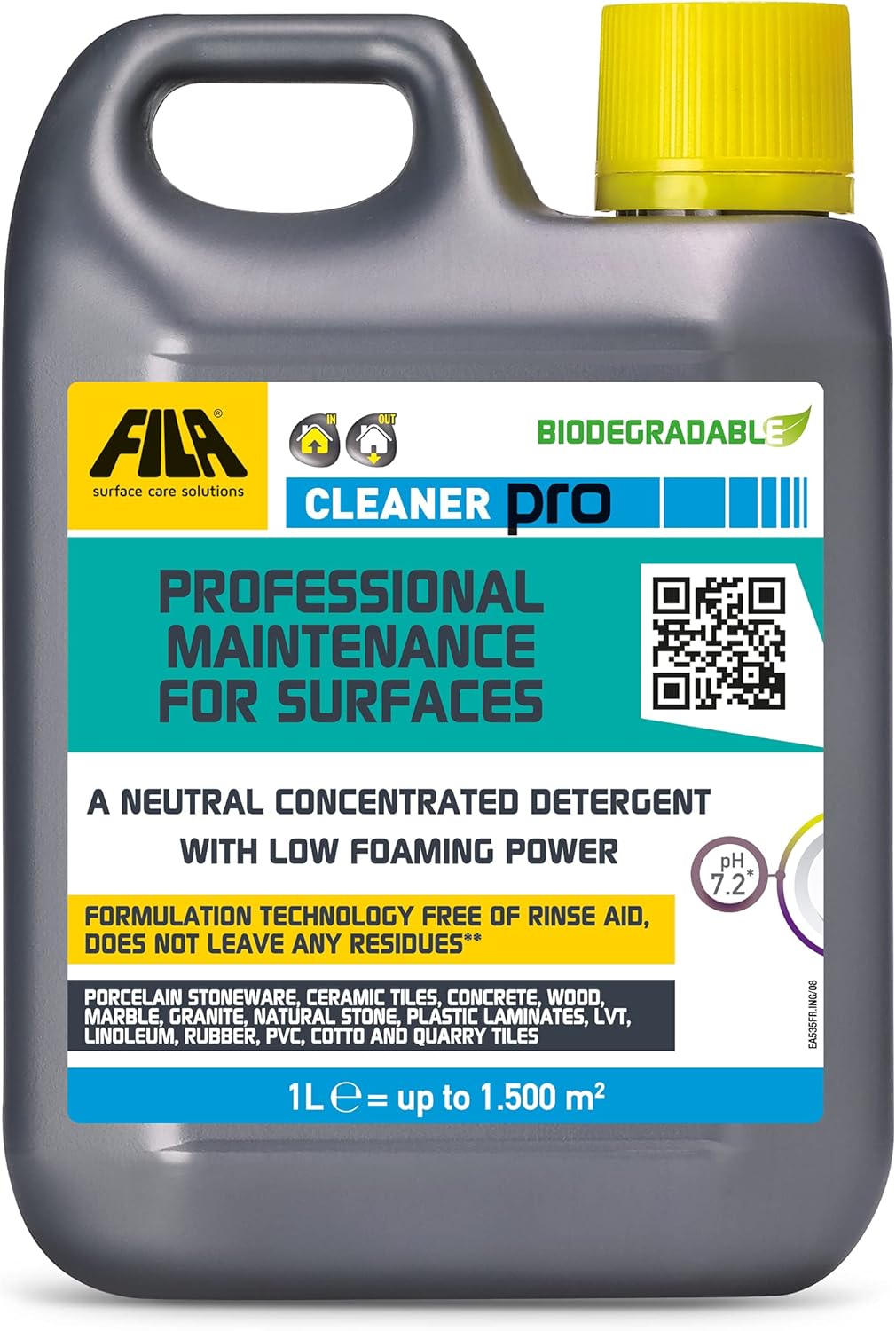
Fila Pro Floor Cleaner
|
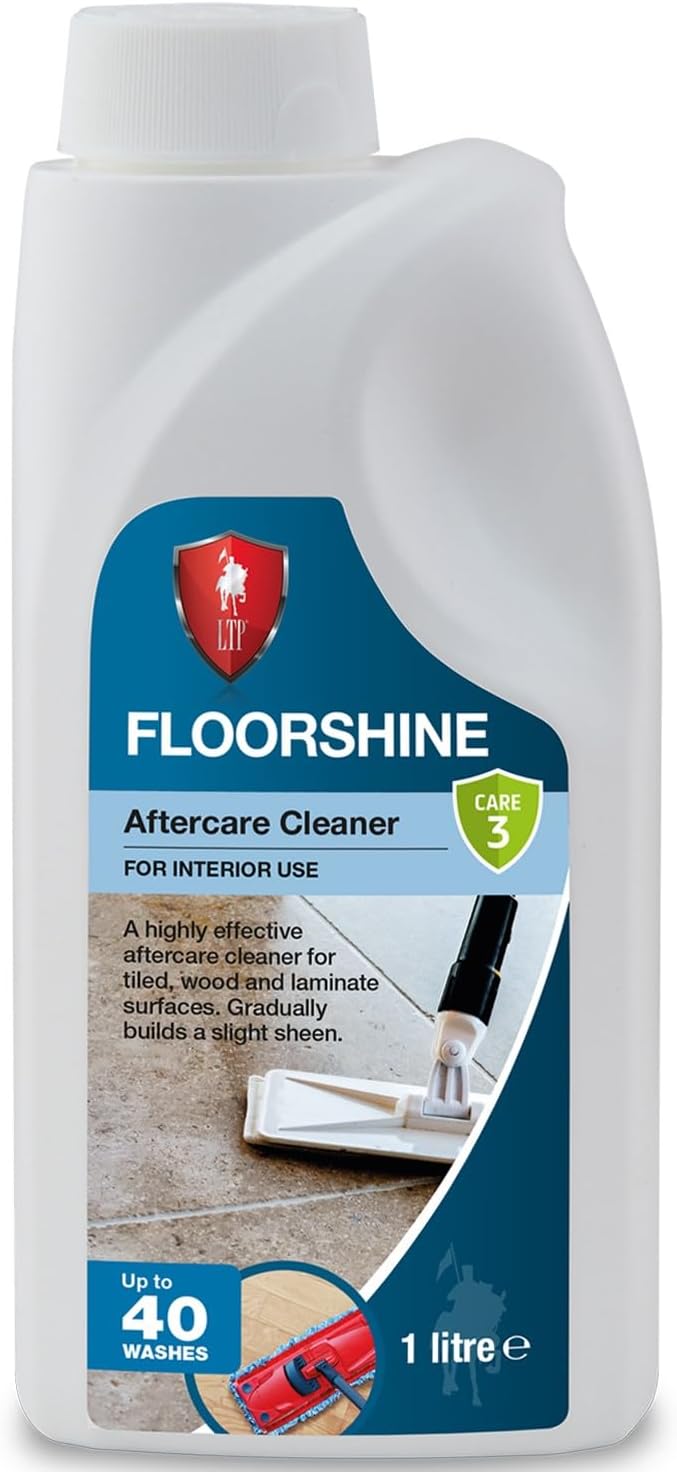
LTP Floorshine
|
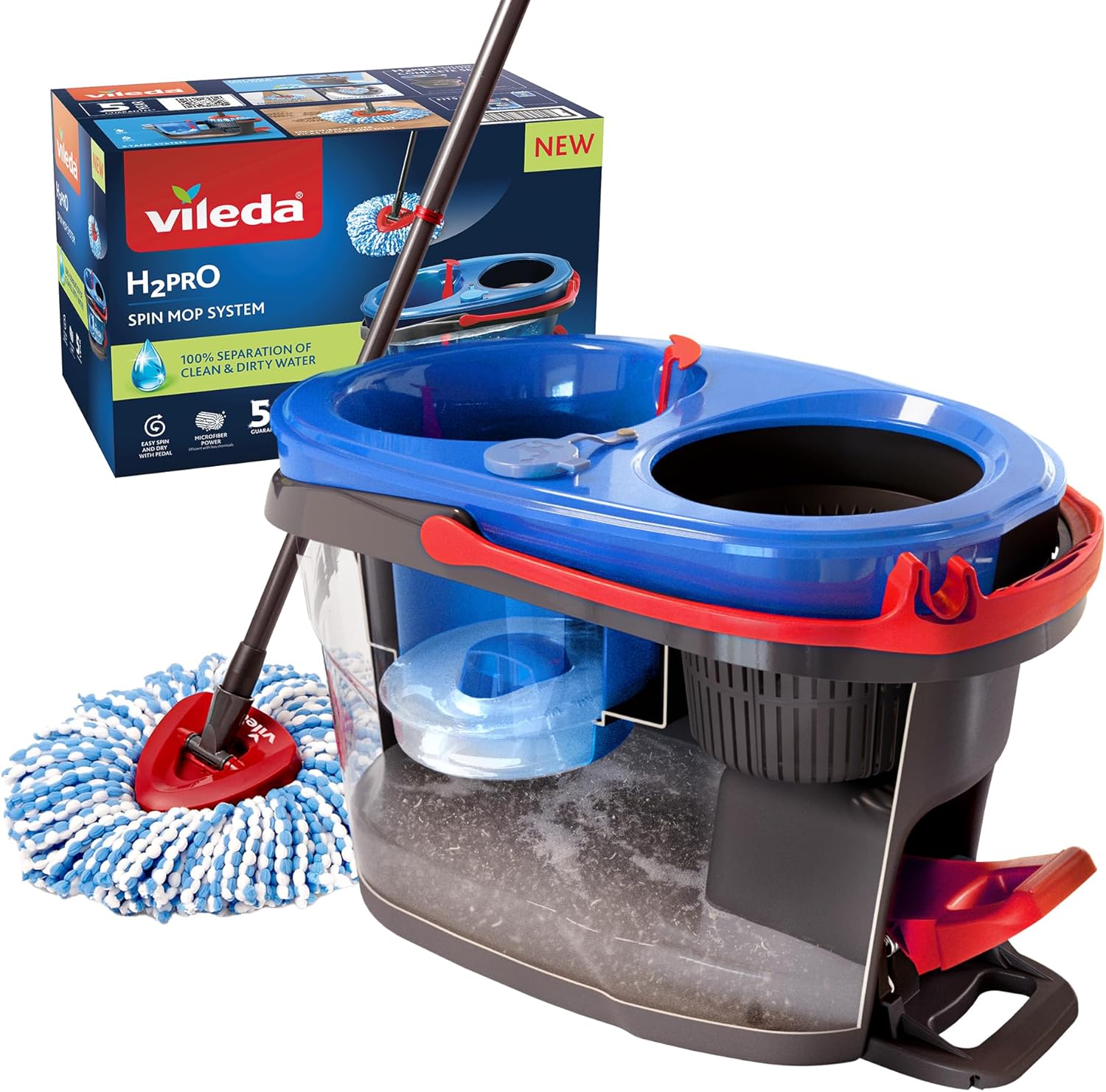
Vileda H2PrO Spin Mop System
|
Understanding Porosity: The Hidden Factor in Dirt Accumulation
Terracotta tiles are crafted from natural clay and are fired at lower temperatures than many other flooring options, resulting in a highly porous surface. This porosity allows the tiles to absorb moisture, oils, and dirt effortlessly, much like a sponge. In everyday scenarios, this characteristic allows grime to penetrate deeply into the tile, making it increasingly difficult to remove with conventional cleaning methods.
Unsealed terracotta tiles are particularly susceptible to this issue. In the absence of a protective layer, even minor spills or muddy footprints can create enduring marks. Over time, these factors contribute to a dull, stained appearance that often requires professional intervention to restore.
How Does Surrey's Climate Affect Terracotta Cleanliness?
The climate in Surrey significantly influences the rate at which terracotta floors accumulate dirt. The region is known for its consistent rainfall and damp conditions, which can bring more moisture indoors, particularly in areas like entryways and conservatories.
Homes in proximity to wonearardens are even more vulnerable. Soil, pollen, and organic matter can easily transfer onto terracotta surfaces, especially if footwear is not removed upon entering the home.
Which Daily Habits Contribute to Increased Dirt Build-Up?
In addition to environmental factors, daily habits can exacerbate the issue. The use of inappropriate cleaning products—such as acidic solutions or bleach—can strip protective coatings and damage tile surfaces. While steam mops are popular cleaning tools, they can inadvertently push moisture deeper into the tile, aggravating the problem.
Areas with heavy foot traffic, such as kitchens and hallways, are naturally more prone to deterioration. If regular sweeping and mopping are neglected, dirt can accumulate quickly and become ingrained within the tile’s texture.
Effective Strategies for Maintaining Cleaner Terracotta Floors
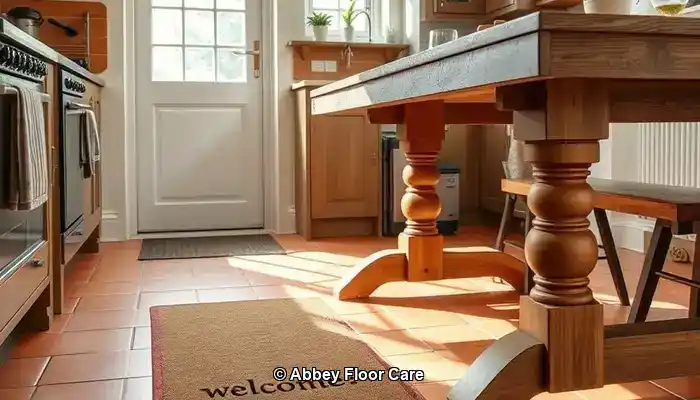
Maintaining clean terracotta floors is not just about reacting to dirt; it involves proactive measures to prevent it from settling in the first place. In homes across Surrey, where damp weather and garden traffic are common, taking preventive measures is vital to preserving the inherent beauty of terracotta tiles.
Sealing: Your Primary Protection Strategy
One of the most effective ways to prevent terracotta from quickly becoming dirty is to ensure it is properly sealed. A high-quality, breathable sealant creates a protective barrier that repels moisture, oils, and grime. In Surrey, where humidity can vary significantly, sealing is critical to preventing water absorption that can lead to staining and mould growth.
Experts suggest resealing terracotta every 12 to 18 months, contingent upon foot traffic and exposure. In high-use areas like kitchens, hallways, and conservatories, more frequent sealing may be necessary. Always select a sealant specifically designed for porous stone, and avoid glossy finishes that can trap dirt.
Smart Layout Solutions: Incorporating Rugs and Mats
Strategically positioning rugs and mats can greatly diminish the amount of dirt that reaches your terracotta tiles. Install heavy-duty doormats at entrances to capture mud and moisture before they spread throughout your home. In high-traffic areas such as hallways or beneath dining tables, area rugs can act as a protective barrier against wear and tear.
For rooms connected to the outdoors, consider washable runners that are easy to clean. These not only protect the tile but also enhance warmth and style within your living space.
Effective Moisture Management in Surrey Homes
Given Surrey’s reputation for frequent rainfall and damp conditions, effective moisture management is crucial in preventing dirt build-up on terracotta. Utilising dehumidifiers in enclosed areas and ensuring good ventilation throughout your home can make a significant difference. Promptly wipe up spills and refrain from leaving wet items—such as shoes or towels—on the floor.
If your terracotta tiles are installed in a conservatory or garden room, consider adding blinds or UV filters to minimise condensation and mitigate sun damage. These minor adjustments can significantly impact the longevity and appearance of your tiles.
By combining proper sealing, intelligent design choices, and moisture control, homeowners in Surrey can drastically reduce the speed at which their terracotta floors become dirty. In the following section, we will explore the best cleaning practices to maintain that fresh, natural appearance day after day.
Optimal Cleaning Techniques for Terracotta Tiles
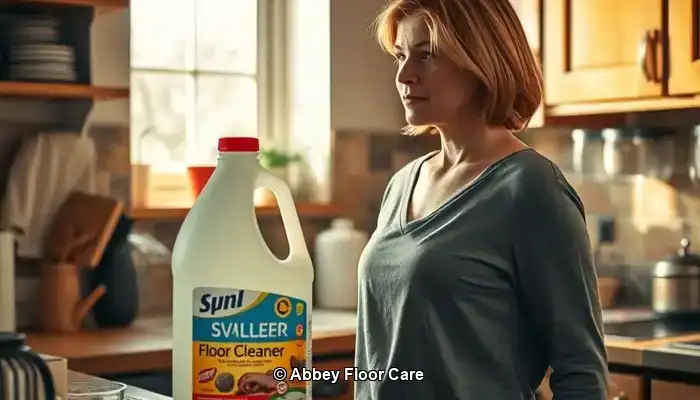
Even with appropriate sealing and preventive measures in place, terracotta floors require regular maintenance to maintain their natural beauty. The key lies in using the right techniques and products that effectively clean without damaging the tiles' porous surfaces.
Establishing a Daily and Weekly Maintenance Routine
In Surrey homes, where outdoor elements often enter the interior, daily sweeping or vacuuming is essential. Use a soft-bristle broom or a vacuum cleaner with a hard-floor setting to remove dust, grit, and organic matter before they settle into the tile.
For weekly cleaning, mop the floor with warm water and a pH-neutral cleaner designed for natural stone. Avoid soaking the floor; damp mopping is preferable. Excess water can seep into the tile, causing stains or mould growth, especially in older or inadequately sealed installations.
Choosing Recommended Cleaning Products
Select cleaning products that strike a balance between gentleness and effectiveness. Look for labels that indicate “stone-safe,” “non-acidic,” or “pH-neutral.” In Surrey, where eco-consciousness is increasingly prioritised, many homeowners are turning to biodegradable cleaners that are safe for both pets and children.
Steer clear of multi-surface cleaners containing bleach, ammonia, or citrus extracts, as these can strip away sealants and etch the terracotta, making it more susceptible to future staining.
For persistent stains, utilise a soft cloth along with a diluted solution of stone cleaner. Always avoid scrubbing with abrasive pads or wire brushes, as they can scratch the surface and complicate future cleaning.
What Should I Avoid? Harsh Chemicals and Steam Cleaning
Although steam mops may appear convenient, they are ill-suited for terracotta. The high heat and moisture can seep into the tile and weaken the sealant, causing long-term damage. Similarly, acidic cleaners, such as vinegar or lemon juice—even when diluted—can erode tile surfaces and lead to discolouration.
Stick to gentle cleaning methods and consistently test any new products on a small, inconspicuous area before applying them across the entire floor.
Understanding the Benefits of Professional versus DIY Terracotta Care
When it comes to caring for terracotta floors, many homeowners in Surrey often start with DIY methods. While regular sweeping and mopping can be effective, there is a point at which professional intervention becomes not only beneficial but necessary.
When Should I Contact a Tile Specialist in Surrey?
If your terracotta tiles exhibit signs of deep staining, uneven colour, or surface wear, it may be time to seek expert assistance. Professional tile care specialists in Surrey employ advanced equipment and stone-safe products that penetrate deeper than typical household cleaners. They can also evaluate whether your sealant has degraded and recommend an appropriate resealing schedule tailored to your home’s specific conditions.
Restoration services typically include deep cleaning, stain removal, and reapplication of breathable sealants that protect the tiles without altering their natural appearance. For older or heritage properties, specialists can even replicate the original finish to maintain authenticity.
Comparing Cost and Longevity: Is Professional Care Worth It?
While DIY cleaning may seem more cost-effective, it often yields only temporary results. Without proper sealing and deep cleaning, dirt continues to accumulate, necessitating more frequent maintenance and increasing the risk of permanent damage.
In contrast, professional care prolongs the life of your terracotta floors. A single restoration session can rejuvenate colour, eliminate entrenched grime, and safeguard the surface for months or even years. In high-traffic areas like kitchens or hallways, this investment pays dividends in reduced maintenance and enhanced visual appeal.
Homeowners in Surrey who prioritise long-term property maintenance and curb appeal often discover that professional services offer peace of mind and superior results. Furthermore, many local providers offer eco-friendly solutions and customised maintenance plans tailored to suit your lifestyle.
Eco-Friendly and Safe Cleaning Solutions for Terracotta
Terracotta’s natural allure deserves care that aligns with health and sustainability principles. For homeowners in Surrey looking to maintain clean floors without resorting to harsh chemicals, eco-friendly cleaning options are increasingly available. Fortunately, modern products and techniques allow you to protect your tiles and your household without compromising either.
Choosing Non-Toxic Sealants and Cleaners
Conventional sealants often contain solvents that emit volatile organic compounds (VOCs), which can linger in indoor air and adversely affect air quality. Contemporary eco-friendly alternatives utilise water-based formulas that are low in VOCs and safe for use around children and pets.
When selecting a cleaner, opt for products labelled “biodegradable,” “plant-based,” or “stone-safe.” These cleaners are specifically formulated to lift dirt without compromising terracotta's porous surface. Brands that specialise in natural stone care typically offer concentrated solutions that can be diluted for everyday use, minimising waste and environmental impact.
Safe Alternatives for Homes with Pets and Children
In bustling Surrey households, safety is just as paramount as cleanliness. Avoid using bleach, ammonia, and acidic cleaners such as vinegar, as they can harm the tile and pose risks to pets and young children. Instead, choose gentle formulas based on coconut oil derivatives, citrus enzymes, or mineral-based ingredients.
For DIY enthusiasts, a simple mixture of warm water and a few drops of castile soap can be surprisingly effective for light cleaning. Always test any homemade solution on a small area first to ensure it does not impact the sealant or finish.
Implementing Sustainable Cleaning Practices
Eco-friendly care encompasses not only product selection but also cleaning habits. Opt for reusable microfiber cloths and mops instead of disposable pads. Regular sweeping can decrease the need for frequent wet cleaning. When resealing, choose products with recyclable packaging and a minimal environmental impact.
Many floor care professionals in Surrey now offer green cleaning packages, using certified, non-toxic products and sustainable methods. If you are uncertain where to start, booking a consultation with a local expert can help you develop a routine that is both effective and eco-friendly.
Maintaining the Aesthetic of Your Terracotta Floors
Terracotta flooring adds warmth, character, and timeless appeal to homes in Surrey. However, its porous nature necessitates careful maintenance to preserve its cleanliness and vibrancy. By understanding why terracotta becomes dirty quickly, ensuring proper sealing, and adopting effective cleaning habits, homeowners can significantly reduce grime accumulation and prolong the life of their tiles.
Whether managing a busy household or restoring a heritage property, consistency is key. Regular sweeping, pH-neutral cleaning, and seasonal resealing greatly contribute to maintaining a well-kept surface. When stains or wear become visible, do not hesitate to contact a local specialist for professional restoration.
Utilising eco-friendly products and safe cleaning routines ensures your floors remain beautiful without compromising health or the environment. With the right approach, terracotta can remain a stunning feature in your home for years to come.
Ready to safeguard your floors intelligently? Contact us today for expert terracotta maintenance tailored to Surrey's specific conditions. Let’s work together to keep your home looking its finest—naturally.
Frequently Asked Questions Regarding Terracotta Maintenance
Terracotta floors possess timeless beauty, but they require specific care. Below are answers to the most common questions homeowners in Surrey ask to keep their tiles clean, protected, and visually appealing.
How Frequently Should I Seal My Terracotta Tiles?
In most Surrey homes, terracotta should be sealed every 12 to 18 months. However, this can vary based on foot traffic, moisture exposure, and whether the tiles are situated indoors or outdoors. Kitchens, hallways, and conservatories may require more frequent sealing. If your tiles begin to absorb water or appear dull, it is time for resealing.
Can I Use Vinegar or Bleach on Terracotta?
No—vinegar, bleach, and other acidic or harsh cleaners can inflict damage on terracotta. These substances erode sealants and etch the tile surface, causing permanent discolouration. Always opt for pH-neutral, stone-safe cleaners specifically formulated for porous flooring.
What is the Best Mop for Terracotta Floors?
A microfiber mop is ideal for terracotta. It captures dust and dirt without scratching the surface and employs minimal water, which is crucial for porous materials like terracotta. Avoid sponge mops or steam mops, which can oversaturate the tile and compromise the sealant.
Is it Safe to Use DIY Cleaning Solutions?
Yes, provided you exercise caution. A mild combination of warm water and castile soap can be effective for light cleaning. Always test any homemade solution on a small, hidden area first. Avoid anything acidic or abrasive, and never apply homemade cleaners to unsealed tiles.
What Should I Do If My Tiles Are Already Stained?
If stains have set in, seeking professional restoration is your best option. Experts in Surrey can conduct deep cleaning, remove embedded grime, and reseal the tiles to restore them to their original colour and texture. DIY methods may exacerbate the damage if inappropriate products are used.
The article Tired of Dirty Terracotta? How to Keep It Clean Longer was first published on https://www.abbeyfloorcare.co.uk
